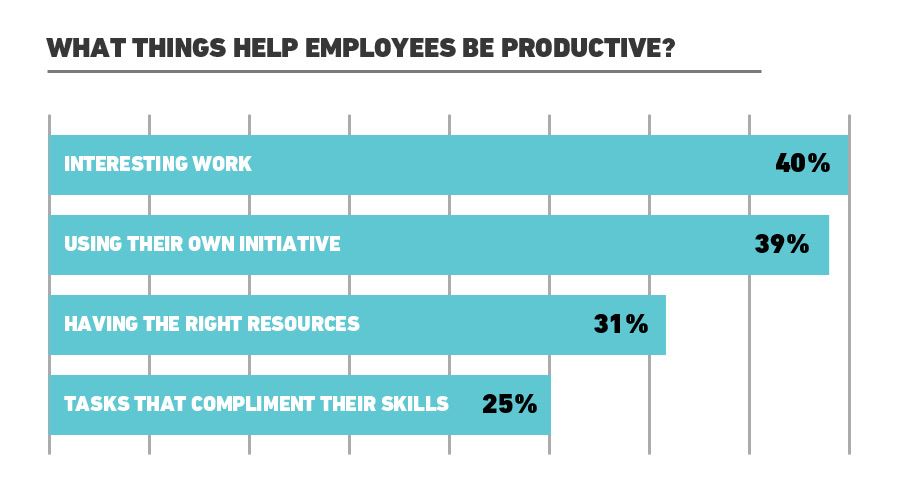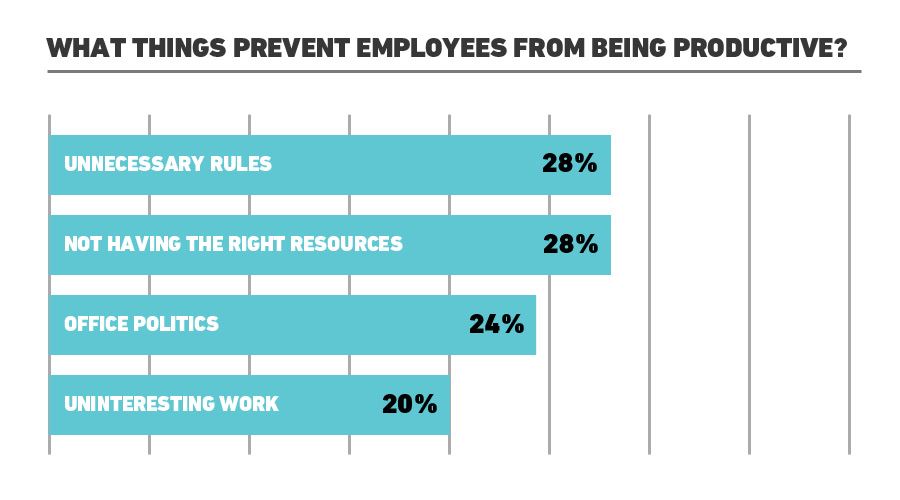UK Workplaces are bound by too many rules, according to a study by the Chartered Institute of Personnel and Development (CIPD)
From the moment you wake up, throughout your commute, during your workday, and whilst you partake in any hobbies, you’re bound by rules. It’s a part of life that for the most part leads to a society and environment in which everyone knows their place, and how to behave.
Rules certainly have their place, but is an over-abundance of them damaging our productivity at work? In the latter end of 2014, UK productivity fell by 0.2%. According to some measures, this puts the UK at around a fifth less productive than the G7 average. We’re also around 40% less productive than the US and lack behind most of our european neighbours. Whilst there is no one answer as to why we’re less productive, workplace flexibility is something that has come into the spotlight following a study by CIPD.
The results are in
Over 2000 UK employees recently responded to survey on employee productivity. The answers aren’t exactly surprising, but they are telling nonetheless.
“What things help employees be productive?”
- 40% – Interesting work
- 39% – Using their own initiative
- 31% – Having the resources to do the job
- 25% being given tasks that compliment their skills
- More women stated flexible working than men, and more men stated technical innovations than women.
“What things prevent employees from being as productive as they would like to be?”
- 28% – Unnecessary rules and procedures
- 28% – Not having the resources needed to do the job
- 24% – Office politics
- 20% – Work that employees don’t find interesting
The rules and procedures that govern us in work are reportedly having the undesired effect of stunting creativity and killing innovation. It seems that one answer to greater productivity in the workplace lies with giving employees more freedom to innovate and play to their own strengths, whilst having the autonomy to pursue their own ideas and work on more engaging tasks.
Complete creative freedom, and wholly enjoyable tasks cannot be guaranteed in every workplace, however. Every job comes with a dosage of unenjoyable and sometimes monotonous work. Part of the challenge is weaving this work into the fabric of an otherwise more inspiring workday.
Transparency in the workplace
Another interesting statistic published in the CIPD report is how people view their own work efforts in comparison to that of their colleagues.
When asked whether they would say they are more, less, or as productive as their colleagues, the answers were greatly in favour of being as productive, or more productive.
- 10% – Much more productive
- 33% – More productive
- 49% – As productive
- 4% – Less productive
- 1% – Much less productive
- 3% – Don’t know
On the whole, 42% of people believe they are more productive than their co-workers, with only 5% believing they are less productive.
This brings up questions of transparency. Do colleagues working under the same roof really know what other employees are up to, day to day? Greater transparency about workloads, projects and timescales could help to close the gap between what people believe their co-workers do, and what they actually do. This would help to encourage team-work, collaboration, ideas sharing and in some cases, lead to greater autonomy amongst colleagues.
How transparent is your workplace? Locked in cubicles or open plan teamwork? Let us know in the comments, and how this works for you!



